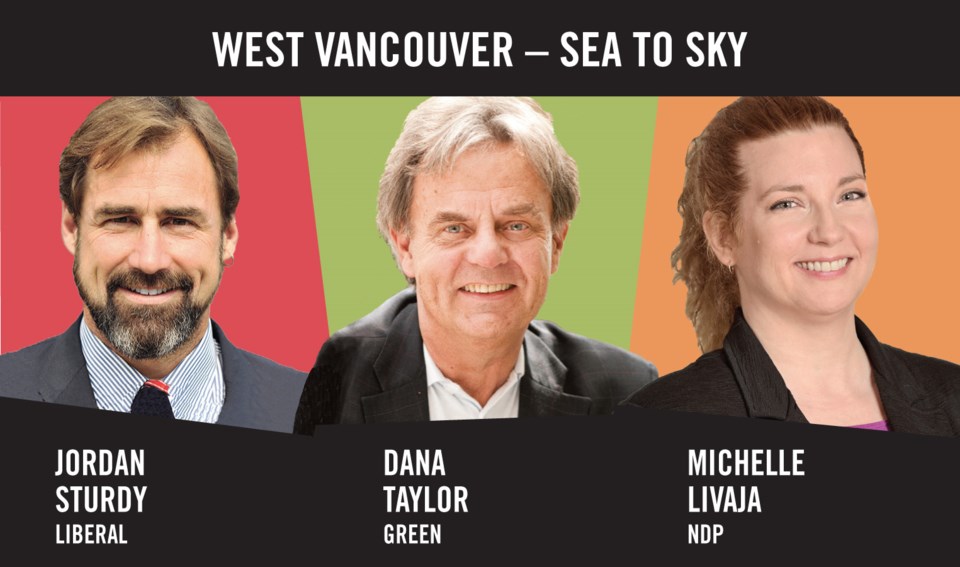Each election, the North Shore News asks the candidates in every riding to fill out a questionnaire on local issues. Today, we bring you the responses from West Vancouver-Capilano candidates. Click here to see our grid.
West Vancouver Sea-to-Sky lies at the western edge of the North Shore’s four ridings.
It’s a sprawling riding fronting both Burrard Inlet and Howe Sound that takes in everything from Whistler’s mountain-top vistas and wilderness provincial parks to waterfront enclaves of the wealthy and growing bedroom communities. Despite the genuinely disparate concerns of the riding – where the tension over issues like growth and conservation are never far from the surface – it has been a Liberal stronghold for more than 25 years. Before that, it was Social Credit – hardly a cause for optimism among the NDP and Green Party challengers looking to make inroads here.
Those who make up the voters in this riding vary widely – from those who live in Altamont, West Bay and the toniest areas of the West Vancouver waterfront to service workers in Whistler and Pemberton and suburban commuters who have moved to Squamish and Bowen.
The Liberals won the riding with 52 per cent of the vote in 2013, and the party has never dipped below 50 per cent. The NDP put its best showing forward in 2013, winning 32 per cent of the vote. That appeared to be largely at the expense of the Greens, who saw their previous 22 per cent of the vote halved.
Environmental issues are a factor, as is affordability of housing and regional transit issues – all issues close to the NDP and Green parties. But money still talks loudly here and the affluent of West Vancouver have overwhelmingly supported the Liberals in their past visits to the ballot box.
Demographics
Population: 52,795
Median age (2011 census): 39
The big issues in the riding:
Housing
The Sea-to-Sky Corridor is one of the fastest-growing areas of the region, with a growth rate of 14 per cent in Squamish, according to recent census figures. That growth has also brought growing pains, as housing prices skyrocket and service workers in Whistler are hard-pressed to find rental accommodation. Even in West Vancouver, the mayor and council members have publicly worried about where the teachers, care aids, police and municipal employees who work in the district are going to live.
Environment
The Woodfibre LNG project exemplifies the tensions between economic growth and environmental concerns in the riding. The Liberals point to the Woodfibre project as a soon-to-be success story that will provide jobs.
But the Greens and environmental advocates say they still have concerns about the prospect of LNG tankers in Howe Sound, along with the generation of greenhouse gases and fracking connected to the project. The NDP has said LNG projects need more stringent regulation. Development pressures – both industrial and commercial – that clash with wilderness environmental values are also a theme throughout the Howe Sound area.
Transportation
Lack of regional public transportation between the Sea-to-Sky corridor and the Lower Mainland has added to the growing pains of bedroom communities like Squamish, where highway traffic has grown by about 25 per cent. Improving safety of some stretches of the highway where crashes still sporadically close the road has also been an issue. In West Vancouver, Mayor Michael Smith has been vocal about what he says is less-than-stellar transit service despite high transit taxes paid to TransLink by local property owners.



